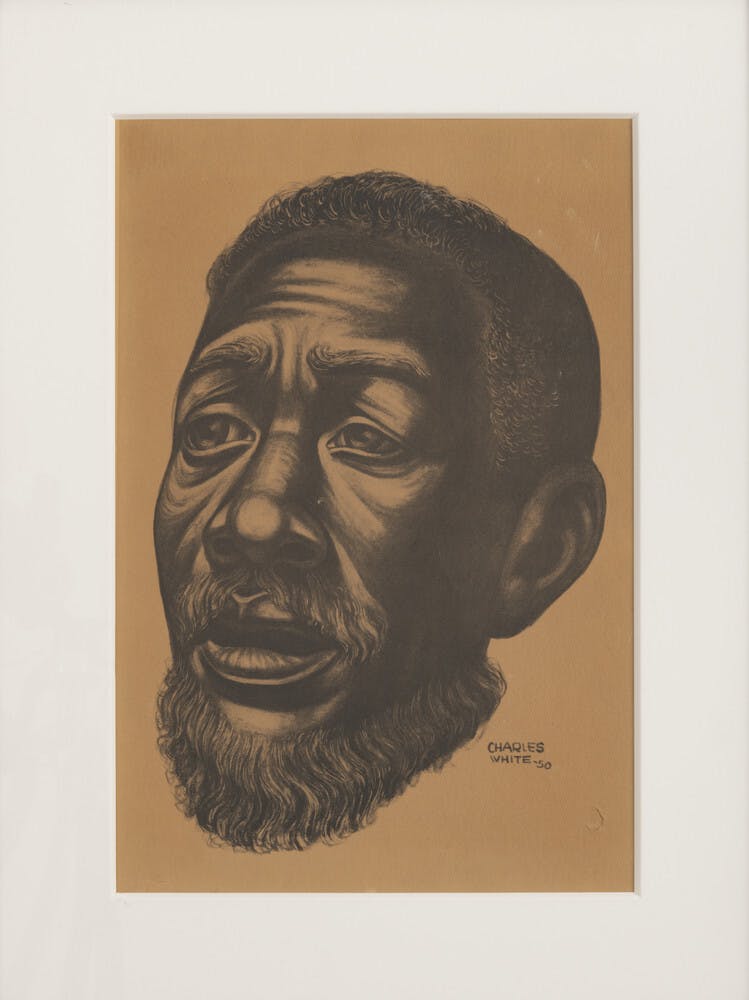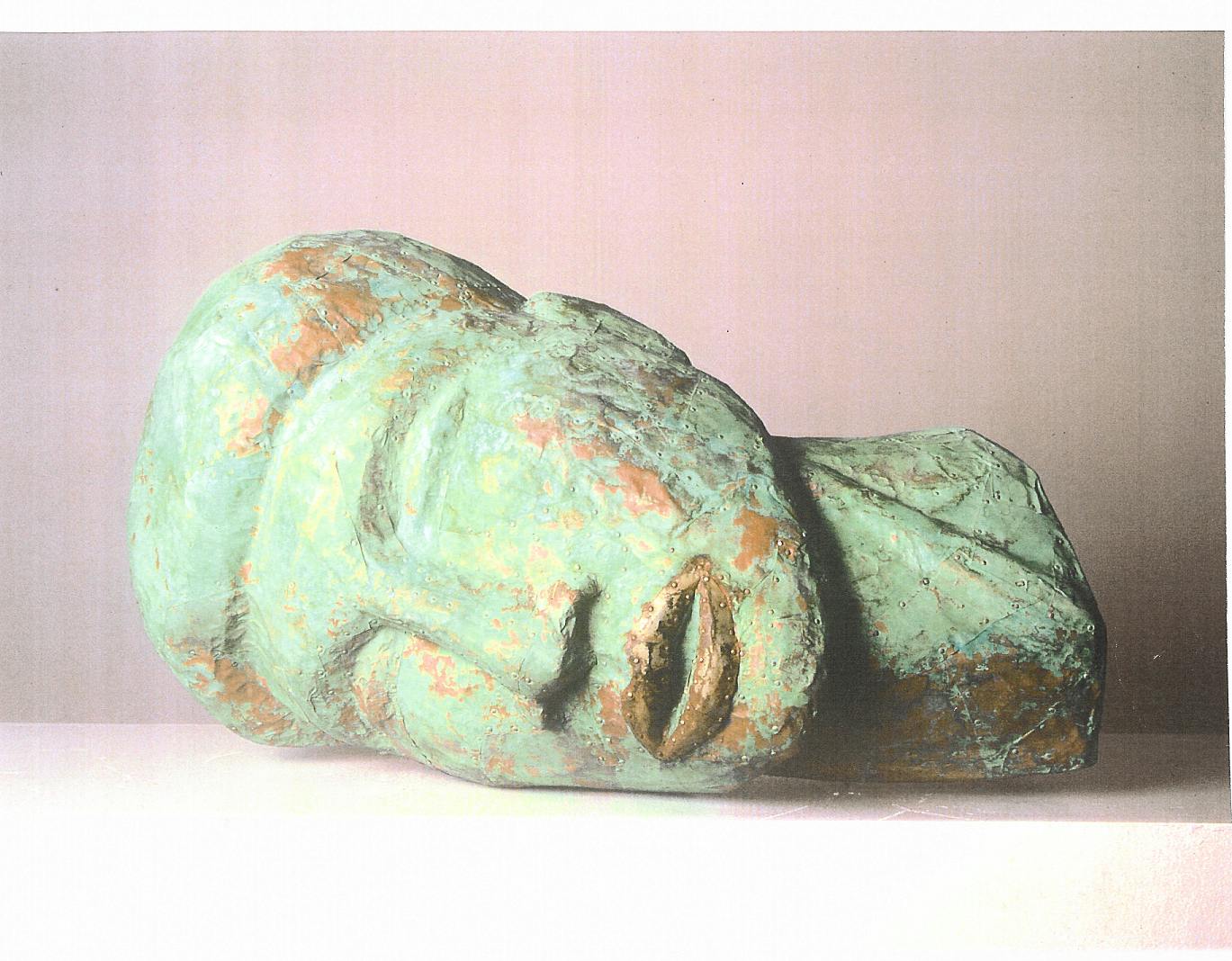Charles White
(1918–1979)Charles White was one of the preeminent artists to emerge during Chicago’s Black Renaissance of the 1930s and 40s. Over his four-decade career, White’s sensitivity to line, shape, and tone informed his depiction of the triumphs and struggles of Black American life in the twentieth century.
Biography
White was raised by his mother, a domestic worker, who often dropped him off at the Chicago Public Library while she worked. There, he became interested in artists and writers of the Harlem Renaissance. He studied at the School of the Art Institute of Chicago for a year, where he took courses in art history, composition, and figure drawing. In 1938, he completed murals for the Illinois affiliate of the Works Project Administration. After moving to New York, in 1942, White began to focus on drawing. His emphasis on art’s ability to spark social activism stemmed from his time in Mexico in the late 1940s, where he visited David Alfaro Siqueiros’s home and created lithographs at Mexico City’s Taller de Gráfica, as well as his participation in the civil rights movement.
In his incisive portrayals of Black experience, White committed himself to a representational style exploring social and political themes that was at odds with the art world’s favoring of abstraction. He brought critical agency to the Black figure in his paintings, prints, and murals. In White’s words, “Art must be an integral part of the struggle. It can’t simply mirror what’s taking place.”1 Over his four-decade career, White’s sensitivity to line, shape, and tone informed his depiction of the triumphs and struggles of Black American life in the twentieth century.
In addition to his prolific career as an artist, White was a dedicated teacher for younger artists. From 1965 until his passing, he taught at the Otis College of Art and Design, where he mentored two artists who would go on to participate in the Studio Museum’s Artist-in-Residence program: David Hammons (1980–81) and Kerry James Marshall (1985–86). The Studio Museum has presented White’s work in numerous exhibitions, including New York/Chicago WPA and the Black Artist (1977); Images of Dignity: A Retrospective of the Works of Charles White (1982); and Tradition and Conflict: Images of a Turbulent Decade 1963–1973 (1985).
1) White, quoted in Jeffrey Elliot, “Charles White: Portrait of an Artist,” Negro History Bulletin 41, no. 3 (May–June 1978): 828.
Exhibitions and Events
Charles White
(1918–1979)Charles White was one of the preeminent artists to emerge during Chicago’s Black Renaissance of the 1930s and 40s. Over his four-decade career, White’s sensitivity to line, shape, and tone informed his depiction of the triumphs and struggles of Black American life in the twentieth century.
Head of a Worker, 1950
Biography
White was raised by his mother, a domestic worker, who often dropped him off at the Chicago Public Library while she worked. There, he became interested in artists and writers of the Harlem Renaissance. He studied at the School of the Art Institute of Chicago for a year, where he took courses in art history, composition, and figure drawing. In 1938, he completed murals for the Illinois affiliate of the Works Project Administration. After moving to New York, in 1942, White began to focus on drawing. His emphasis on art’s ability to spark social activism stemmed from his time in Mexico in the late 1940s, where he visited David Alfaro Siqueiros’s home and created lithographs at Mexico City’s Taller de Gráfica, as well as his participation in the civil rights movement.
In his incisive portrayals of Black experience, White committed himself to a representational style exploring social and political themes that was at odds with the art world’s favoring of abstraction. He brought critical agency to the Black figure in his paintings, prints, and murals. In White’s words, “Art must be an integral part of the struggle. It can’t simply mirror what’s taking place.”1 Over his four-decade career, White’s sensitivity to line, shape, and tone informed his depiction of the triumphs and struggles of Black American life in the twentieth century.
In addition to his prolific career as an artist, White was a dedicated teacher for younger artists. From 1965 until his passing, he taught at the Otis College of Art and Design, where he mentored two artists who would go on to participate in the Studio Museum’s Artist-in-Residence program: David Hammons (1980–81) and Kerry James Marshall (1985–86). The Studio Museum has presented White’s work in numerous exhibitions, including New York/Chicago WPA and the Black Artist (1977); Images of Dignity: A Retrospective of the Works of Charles White (1982); and Tradition and Conflict: Images of a Turbulent Decade 1963–1973 (1985).
1) White, quoted in Jeffrey Elliot, “Charles White: Portrait of an Artist,” Negro History Bulletin 41, no. 3 (May–June 1978): 828.

